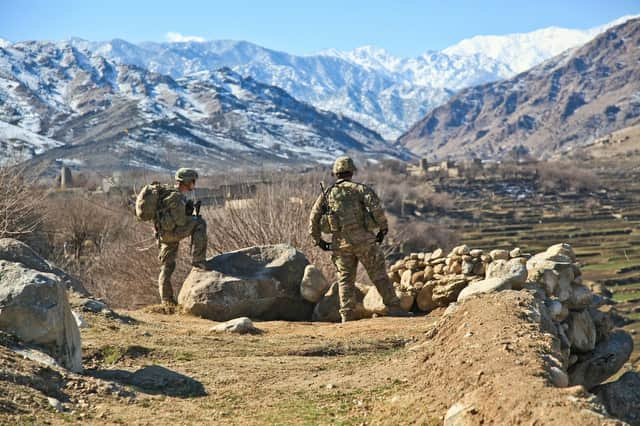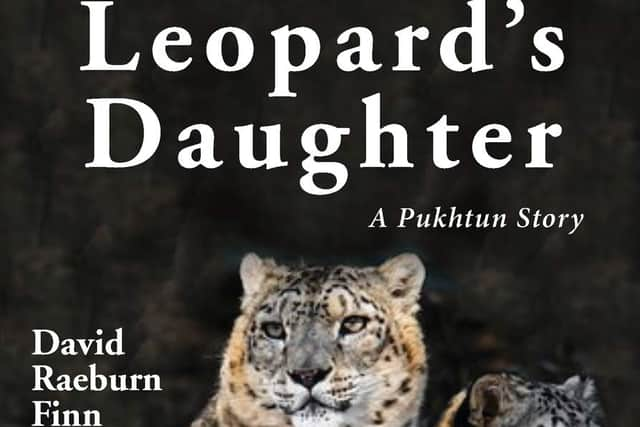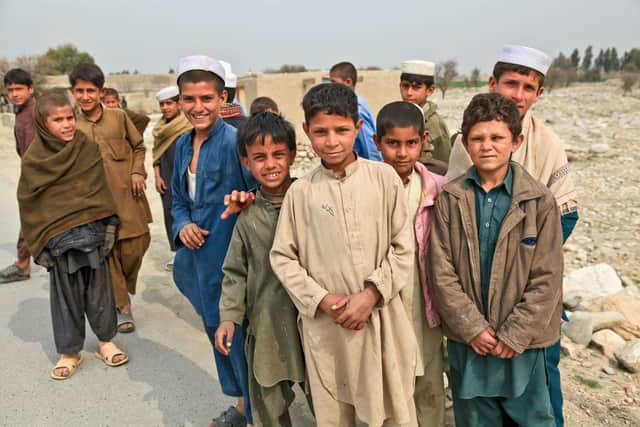MUST-READ OF THE WEEK: THE LEOPARD’S DAUGHTER: A PUKHTUN STORY


This article contains affiliate links. We may earn a small commission on items purchased through this article, but that does not affect our editorial judgement.
New romantic thriller The Leopard’s Daughter: A Pukhtun Story by David Raeburn Finn is an engrossing and insightful novel set during the War in Afghanistan and which lays bare the horrors of military conflict.
It has only been a matter of months since the War in Afghanistan, the US-led occupation which spanned two decades, finally came to a close.
It is best to leave it to future historians to determine the success or otherwise of this prolonged military intervention but whatever the final verdict one thing is clear: the war caused untold harm to the country and its, largely, peace-loving people.
I say “untold” because, as is always the case, the ‘official’ figures on the number of civilian casualties is, to say the least, highly questionable.
An independent analysis conducted by US-based pacifist and social justice organisation Code Pink estimated that it resulted in the deaths of more than one million Afghan and Pakistan citizens. This is in stark contrast to the US’s own estimate of fewer than 40,000 casualties.
However many people died, the vast majority were innocent Pashtuns as opposed to bloodthirsty West-hating Islamic fundamentalists and this is something that Canadian author David Raeburn Finn had firmly in his mind when penning moving new novel The Leopard’s Daughter: A Pukhtun Story.
It follows the story of Mohammed, a skilled but politically naïve Denver surgeon of Pashtun descent who, during the War in Afghanistan, joins US Special Forces as a frontline medic at a secret base in Kunar, Afghanistan.
There, in a story of charged racial politics and clashing cultures, Mohammed can’t but help get drawn deeper into his roots.
At first, he prays and converses with Afghan civilians, whom he finds to be both spirited and generous despite their hardships.
Soon, however, he finds himself having no option but to physically defend them—not from Taliban troops but from his follow US soldiers, who have a sickening bloodlust fuelled by xenophobia and a gross disrespect for the rules of war.
Little does he know, however, that his Muslim faith and background already have him marked on a secret CIA watch list dubbed ‘OWL’ (Others Watch List).


After surviving a cross-border ambush that was specifically targeting him, thanks to the unprompted assistance of a nearby Pashtun family, Mohammed calls upon his medical knowledge to save the life of Shahay, a young widow who had bravely helped fight off the attackers before being injured.
Mohammed accepts the invite of Shahay’s brothers to tend to her recovery at their Bajaur home and now welcomed as an esteemed guest, he soon becomes drawn to them, especially Shahay, known as the “Leopard’s Daughter”.
His visit, however, unknowingly sets in motion a CIA private contractor operation aimed at discovering Mohammed’s true motives and allegiance.
Before it closes, it will bring tragedy and gruesome deaths to the residents of Bajaur, raising the question of whether these innocent deaths can ever be forgiven.
The premise of this story, then is immediately promising—a fast-paced thriller with a romantic subplot that both softens the bleak scenario while at the same time only ramping up the peril and stakes.
Yet it must also be stated that The Leopard’s Daughter: A Pukhtun Story is also undoubtedly an anti-war novel, highlighting through its well-drawn and engaging characters, keen observations, and thoughtful plotting, the devastating impact of the US military intervention.
Not very well-known in the western world, the Pukhtuns are part of the broader Pashtuns ethnic group of Afghanistan and Pakistan, separated from the wider Pashtuns only by their dialect.
Finn is the perfect author to bring us into this hidden culture, essentially unknown to those in the West in any meaningful way.
Firstly, he has previously co-authored A Brief Introduction: Believing Women In Islam, which considers the Quran’s teachings about women and patriarchy and which has been nominated for the prestigious 2022 Grawemeyer Award in Religion.
Secondly, he is a keen scholar on the Pashtun people, counting many elders as friends and whom he interviewed while researching his novel.
Thirdly, he comes from a military family and keeps abreast of American foreign policy and politics, approaching it with the enquiring mind one would expect of a philosophy teacher.
This is why, then, the alien world he conveys seems so concrete and lived in, providing a vivid representation of Pashtun culture.


This wider context is what is missing from the sterilised reporting of war, and what makes you understand better than anything else that beneath the language and religious differences there are just people trying to keep things going amidst a climate of uncertainty and fear.